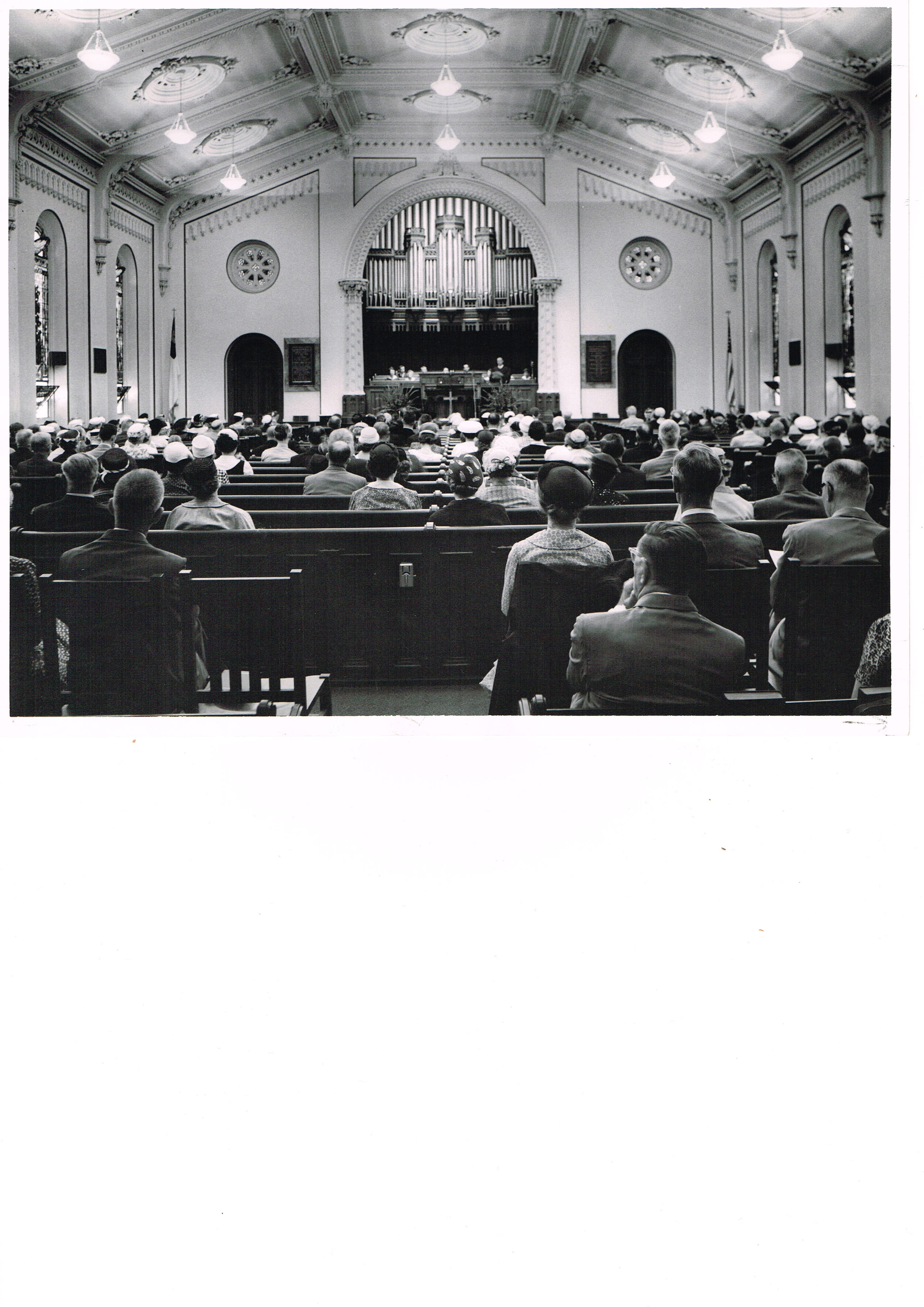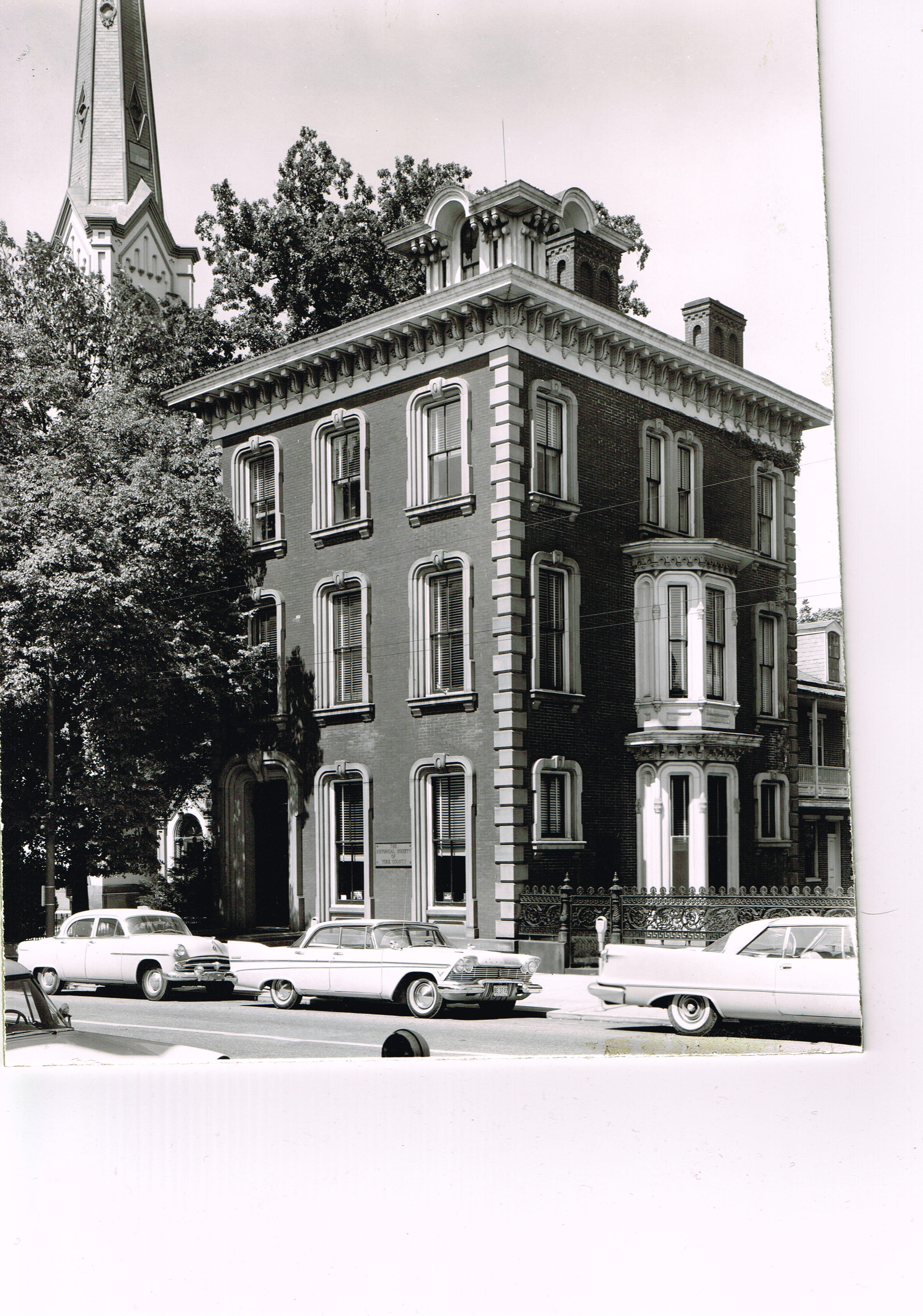Our History
Although an exact date when the Colonial Christians who would become First Presbyterian Church of York began to meet is unknown, the years preceding the Revolutionary War are usually suggested as the era that gave birth to our congregation. At that time Carlisle Presbytery supplied temporary ministers or theologians to small groups of Presbyterians meeting informally in homes. The Carlisle records for this period from 1750 to 1759 were unfortunately lost, but the name of William Hanna emerges as the pulpit supply as early as 1761. Later York was assigned to the Donegal Presbytery, and began to supply the congregation with temporary pastors.
After the war, in 1785, for the sum of five shillings, the group obtained a deed of land from the grandsons of William Penn for “a house of religious worship and burial ground” for a “Society of English Presbyterians.” The building of a church upon this lot began in 1789. This land is the present site of First Presbyterian Church of York. The original small brick church was completed in 1793 some three years after the 1790 installation of the congregation’s first minister, Dr. Robert Cathcart. Among those who signed the call for Dr. Cathcart was Col. James Smith, York’s signer of the Declaration of Independence. Dr. Cathcart served the church for 44 years and died in 1849 at the age of 90.
Dr. Cathcart’s ministry was followed by a long line of dedicated senior pastors, well-known known for their leadership and commitment to community involvement. Dr. Henry E. Niles, who served the church from 1865 to 1900, helped sponsor such institutions as the Children’s Home, York Collegiate Institute (now York College), and York Hospital. Ongoing outreach by the church resulted in the formation of three additional Presbyterian churches: Calvary in 1883, Westminster in 1887, and Faith in 1895. Faith merged with First Presbyterian in 1965; Calvary followed suit in 1996.
In 1860, the roof of the original sanctuary caved in, leading to the demolition of the original building. The cornerstone of a new Victorian building, described as “Italian-inspired with rounded Gothic arches,” was laid that same year. The building was completed September 6, 1861 by local builder, Nathaniel Weigle, at a cost of $20,000. This Civil War-era sanctuary remains, with subsequent remodeling in 1930-31 and again in the mid 1950s, as our present “house of worship.”
By 1867, the ecumenical Sabbath School that had begun in 1817 outgrew its small lecture room adjacent to the church and found a new home in the church school building that replaced it. This building forms the nucleus of the present Kerr Education Building. First Presbyterian Church purchased the Billmeyer House from the Historical Society in 1959 and remodeled it to house the church offices in the 1970s. In the early 1960s, the Calvin Memorial Chapel was built on its present site.
In our historic churchyard are buried some 175 persons, representing many well-known families from the 18th and 19th Centuries. The most famous of these is Colonel Smith. A booklet is available with information about other persons interred there whose graves are marked with weathered headstones. In 1993, First Presbyterian Church added a Memorial Garden where ashes of members may be committed. Plaques attached to the Billmeyer House recall the names of 20th and 21st Century members who have gone to be with the Lord.
For more than two centuries, the steeple of First Presbyterian Church has been a welcoming symbol to the faithful and seekers alike, beckoning all to come and worship God the Father by lifting up the name of Jesus the Son in the power of the Holy Spirit.






